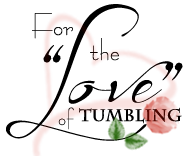Creating Power For Stunts, Baskets and Tumbling
I. Our posture- Alignment of 4 energy centers
- A. GPS Center (head, neck and brain)
- B. Extension Center ( upper torso where you extend, twist and use arms)
- C. Power Center (inner core- alignment within pelvic region)
- D. Balance Center (power base)
II. Muscles- Must be long and strong to provide spring power
- A. Inner Core Muscles – slow twitch- designed for stabilization and stamina
- B. Armor Muscles – fast twitch- designed for movement, power and speed
- C. Gravitational forces travel from your feet through legs into pelvis. Within the pelvis, muscles and fascia create a girdle spring mechanism that brings lift and extension to the lumbar area and thoracic area. It also locks sacroiliac joint bringing stability and grounding to your pelvis, legs and feet. The fascia is in a spiral pattern. As activity increases the muscles wrap tighter creating elastic recoil that increases spring of entire body. Forces within the pelvis coupled with the build up of air pressure inside abdomen and thoracic cavities act to produce an airborne effect tot the upper torso. This is much like a spring in a spring floor. As it is compressed it stores energy to allow it to spring free and explosively when the gravitational force applied to it leaves the ground therefore catapulting the force into the air.
III. Imbalances in Posture
- A. Balance the horizontal planes of body – eyes, head, shoulder and hips
- B. Balance the alignment when facing sideways – head shoulders and hips
- C. Balance the curves of your spine – cervical, thoracic and lumbar- check to see spine is straight and sacrum is level.
- D. Free all body parts including neck, ankle, knee, hips and shoulders so they can move trough full range of motion.
IV. Power Center- Core
A. Lumbar curve – power of the body- check for too little or too much
V. Power from Bottom to Top
- A. Arch in foot and ankles work like a suspension bridge
- B. Knee alignment – knees track over 2nd toe
- C. Hip Power if you can move your hips through the full range of motion it is capable of withstand 12-15 times our body weight.
- D. Suspender Muscle – Holds everything in place
- 1. Psoas – King core muscle
- Sacroiliac joints
- Lumbar – sacral (L5/sacrum)
- Lumbar – dorsal (T12/L1)
- Extensor center (T5/T6)
- Cervical – dorsal (C7/T1)
- Atlas – axis (C1/C2)
- TMJ (temporal- mandibular joint)
- These act like a telephone exchange system. Strong core centers your body increasing the potential energy available for powerful movement.
- These seven power links act as a bridge between body, brain and behavior
- 1. Place tongue under top teeth which activates a system that stabilizes your head, neck or jaw.
- 2. Holding your breath activates the inner core around your extensor center to stabilize your torso
- 3. Pulling belly button in and up centers the body – activates deep corset that works to stabilize lumbar spine.
- 4. Squeeze buttocks – Tight seals pelvic floor and completes core stabilization
- 1. Anaerobic Fitness – lifting, walking up steps
- 2. Aerobic Fitness – running, swimming
- 3. when you fail to facilitate recovery, you end up with neural fatigue and hormonal imbalance (make sure load and unload volume and intensity of training are regulated)
- 1. Control emotions
- 2. Self- talk- accentuate the positive
- 3. When a mind commands the body should follow problems come up when the mind drives faster than the body can go, then the body breaks down. Make sure the body is conditioned to exceed the demands of the mind.
Albert Einstein “To keep doing the same thing and to expect a different result is a sin of insanity”
These ideas have been taken from the works of Lee Parore from his wonderful book called “Power Posture” written in 2002 by Apple Publishing Company. For Further information please purchase this book. Your athleticism will be revolutionized.
